Twin 'was just melting': Babies with neuromuscular disease find new hope in Austin
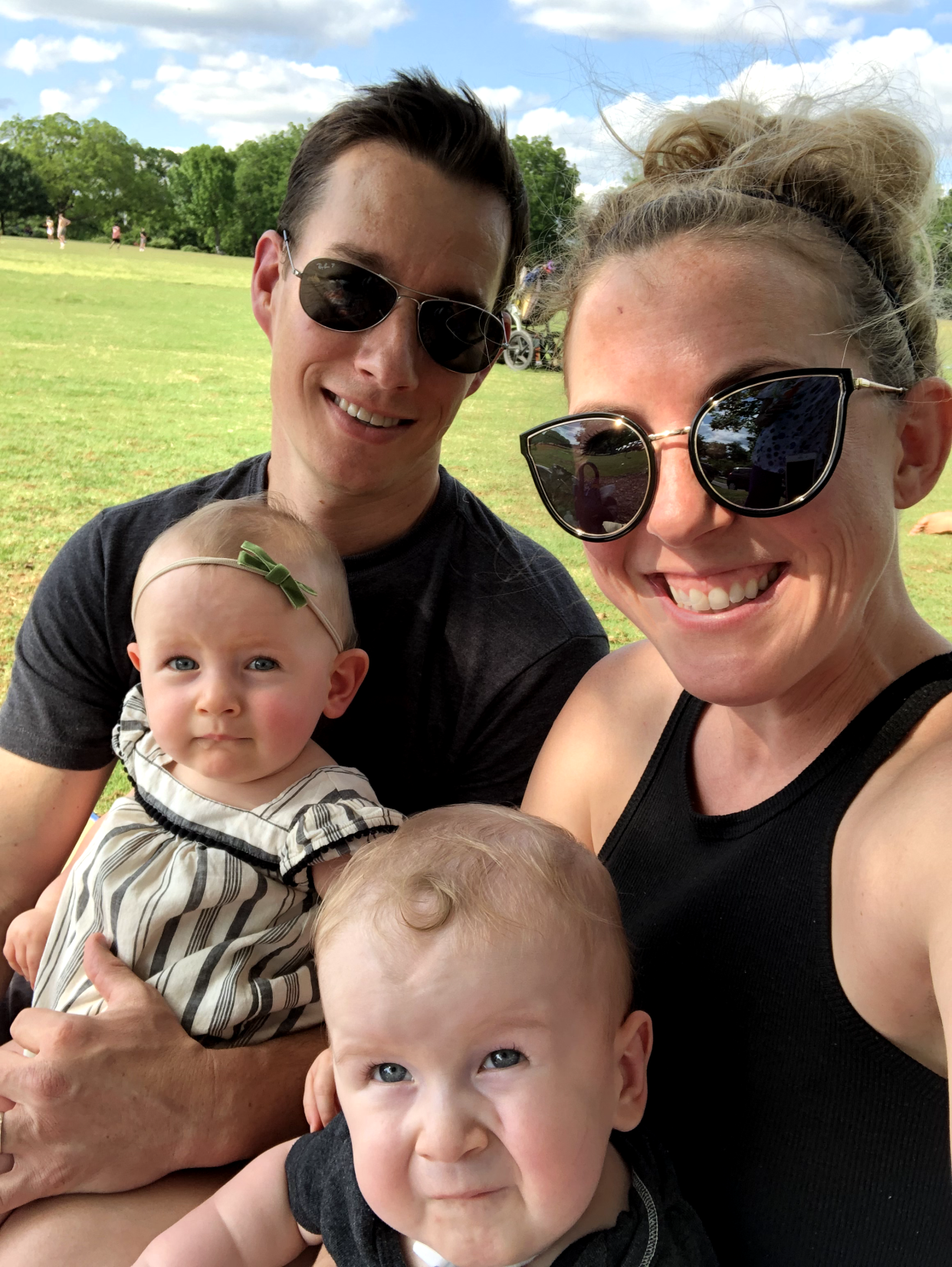
Jenny and Jarod Carter's twins weren't making their typical infant milestones after they were born in January 2018.
Daughter Adelaide went from holding her head up to not being able to do so. Son Gray had noticeably low muscle tone and wasn't able to do things like hold his legs when on his belly. They started physical therapy with him by 4 months, but he didn't get any better.
By 6 months, the Austin family had gotten genetic testing done on the twins. When the results came back a month later, they were diagnosed with spinal muscular atrophy I, the most severe of the types of SMA.
As the Carter twins were being diagnosed, SMA was being added to the federal Recommended Uniform Screening Panel, and so babies in Texas were one step closer to being checked for SMA as part of the regular newborn screenings.
Blood is usually collected when babies are a day old and again at 2 weeks old, and tests can be done for 33 other primary conditions and 21 secondary conditions. Newborns in Texas also get a congenital heart condition screening and a hearing check.
Last July, Texas newborns began being screened for SMA, three years after it was added to the Recommended Uniform Screening Panel.
Today, a newborn identified with SMA is able to receive gene therapy that can allow that baby to grow up with an almost normal body.
The Carter twins were able to receive that same gene therapy and another medication to help slow the disease. They have made remarkable progress, but their bodies have not rebounded from the motor neurons lost by the progression of the disease those first months.
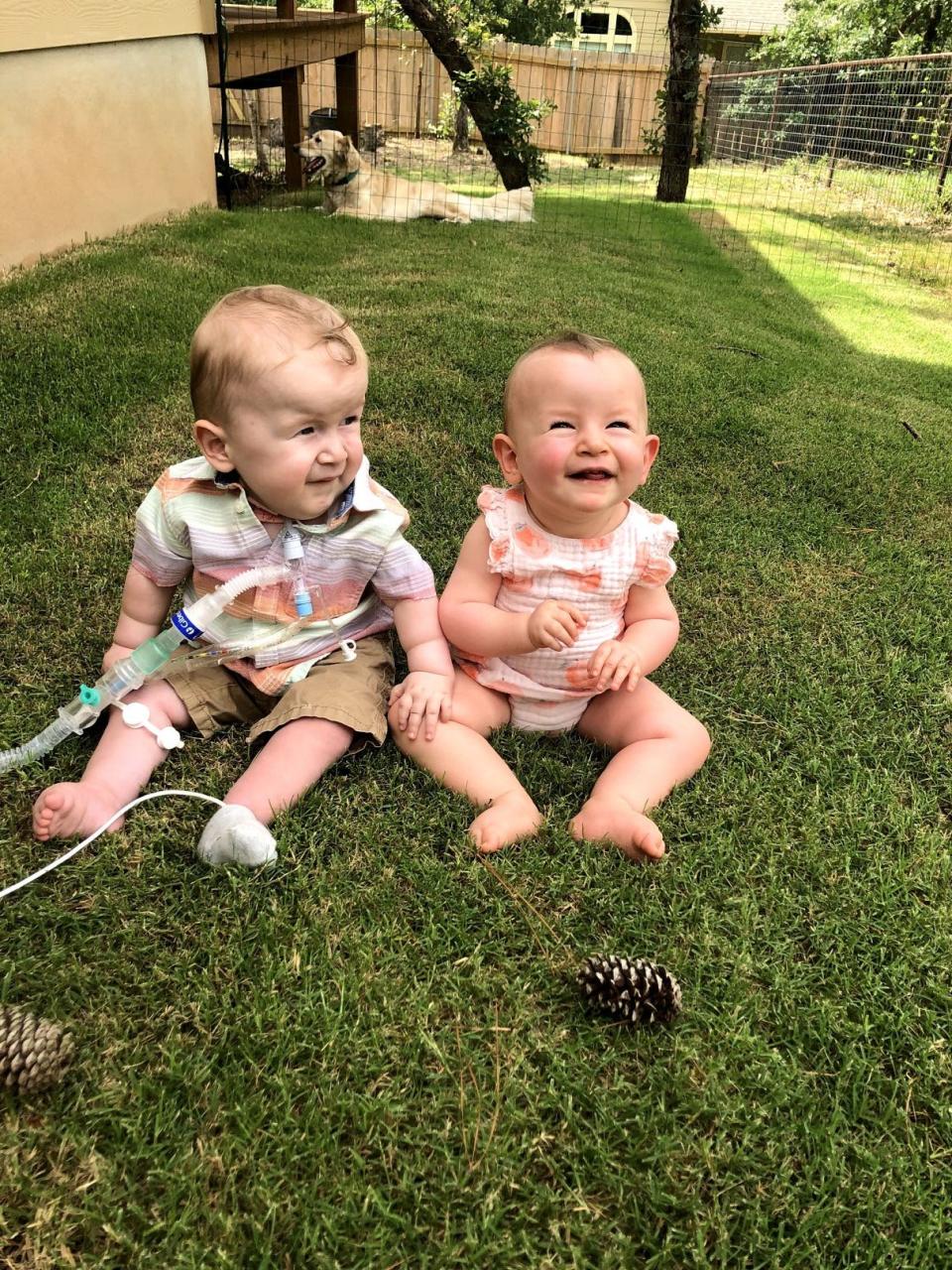
Time matters with SMA
"Time is muscle; time is motor neurons," said Dr. Vettaikorumakankav Vedanarayanan, a pediatric neurologist at Dell Children's Medical Center of Central Texas who treats children with SMA, including the Carters.
SMA is a genetic mutation. Both parents have to be carriers of the genetic mutation in order for it to occur. Then there is about a 25% chance for that couple's baby to have SMA.
Those with SMA do not make the survival motor neuron protein because they do not have the SMN 1 gene or the gene is mutated. That protein is needed to protect motor neurons, which control the body's ability to move muscles.People with SMA do have the SMN 2 gene, which also can make this protein, but the gene cannot make enough of the protein to cover all the motor neurons, and they begin to die.
SMA comes in various levels, from 0 to 4. SMA 0 babies sometimes die before birth, or if they are born, they immediately have trouble breathing. With each increase in number, the later the symptoms become noticeable and the greater the chance of living longer without intervention, in general.
SMA 1 is the most common form. Babies with SMA 1 typically are on a ventilator by around 8 to 9 months, Vedanarayanan said, and typically don't live past 2 years.
Before newborns were being screened for SMA, most SMA 1 babies were diagnosed between 3 and 6 months, when they start missing their milestones.
Adding to the RUSP: Austin family helping to get NPC1 disorder onto newborn screening test
Getting SMA added to screenings
The general practice of the federal Advisory Committee on Heritable Disorders in Newborns and Children, which hears proposals on what testing should be added to the Recommended Uniform Screening Panel, is to screen only for conditions that have a treatment that will make a measurable difference when given early.
That committee talked about SMA in 2008 but did not move forward because there weren't any therapies available other than physical therapy and nutritional support.
Until six years ago, people with SMA didn't have any treatments approved by the FDA.
The first drug approved was Spinraza in 2016. It was approved for all types of SMA and all ages. It's an injection in the spinal fluid given twice at first and then every four months for the rest of the person's life. Spinraza helps increase the production of the SMN protein by the SMN 2 gene.
Zolgensma, a gene therapy given intravenously, was approved in 2019 for children under 2 years old. It is given once and takes only about an hour to give. It uses a virus to carry a new copy of the SMN 1 gene. The virus then infects the cells with the new DNA that has the SMN 1 gene.
It works better the sooner it can be given. After age 2, Zolgensma isn't thought to be as effective because the body's immune system is more developed and will fight against the virus and the new DNA.
A third medication for SMA was approved in 2020. Evrysdi is an oral medication taken every day for ages 2 months to adults. Like Spinraza, Evrysdi does nothing about the SMN 1 gene. Instead, it tries to boost the SMN 2 gene to make more of the SMN protein.
Once there was Spinraza, the federal committee could move forward and recommend that SMA be added to the Recommended Uniform Screening Panel by approval of the U.S. Department of Health and Human Services secretary. This happened in 2018.
Medical mystery: Austin family's mystery turns into diagnosis, walk to treat Angelman syndrome
Moving from federal to state level
Getting the mutation added to the Recommended Uniform Screening Panel was just the first step to Texas newborns being screened. Each state decides which items it wants to add to its newborn screenings.
It takes about three or 3½ years to make it onto Texas' newborn screening list if the state decides to add it, said Debra Freedenberg, medical director of the newborn screening unit and genetics at the Texas Department of State Health Services.
It's not a simple process. The state has to develop the testing protocol, train the laboratory technicians and calibrate testing machines. Each condition can require different lab equipment, reagents and supplies.
The state also has to develop a communication plan about the new test and assemble resources for families and pediatricians.
The state also has to find funding for the condition to be added to the newborn screening panel. To add SMA, the fee for a newborn screening rose $2.97, from $60.58 to $63.55 per infant. That gets paid by private insurance, Medicaid or a charity program.
"We do wish it was quicker," Freedenberg said of the three years or more it takes from when a screening is added to the federal panel to when it starts in Texas. "We can't blink twice and snap our fingers and have everything involved in place."
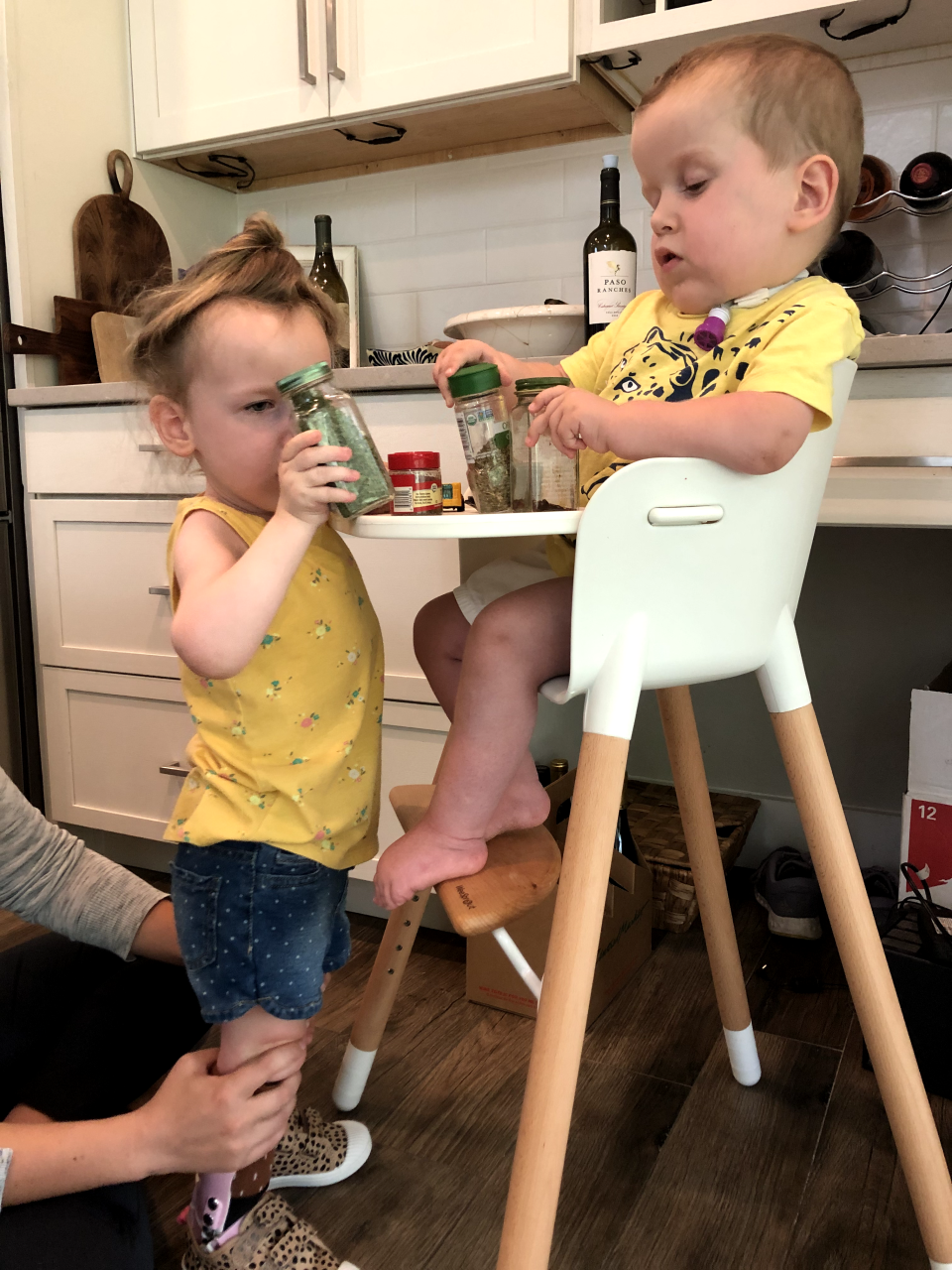
Research: Austin Regional Clinic testing vaccine against common cause of birth defects
Drug progress: Austin family rejoices over cystic fibrosis drug Trikafta approved by FDA for kids 6-11
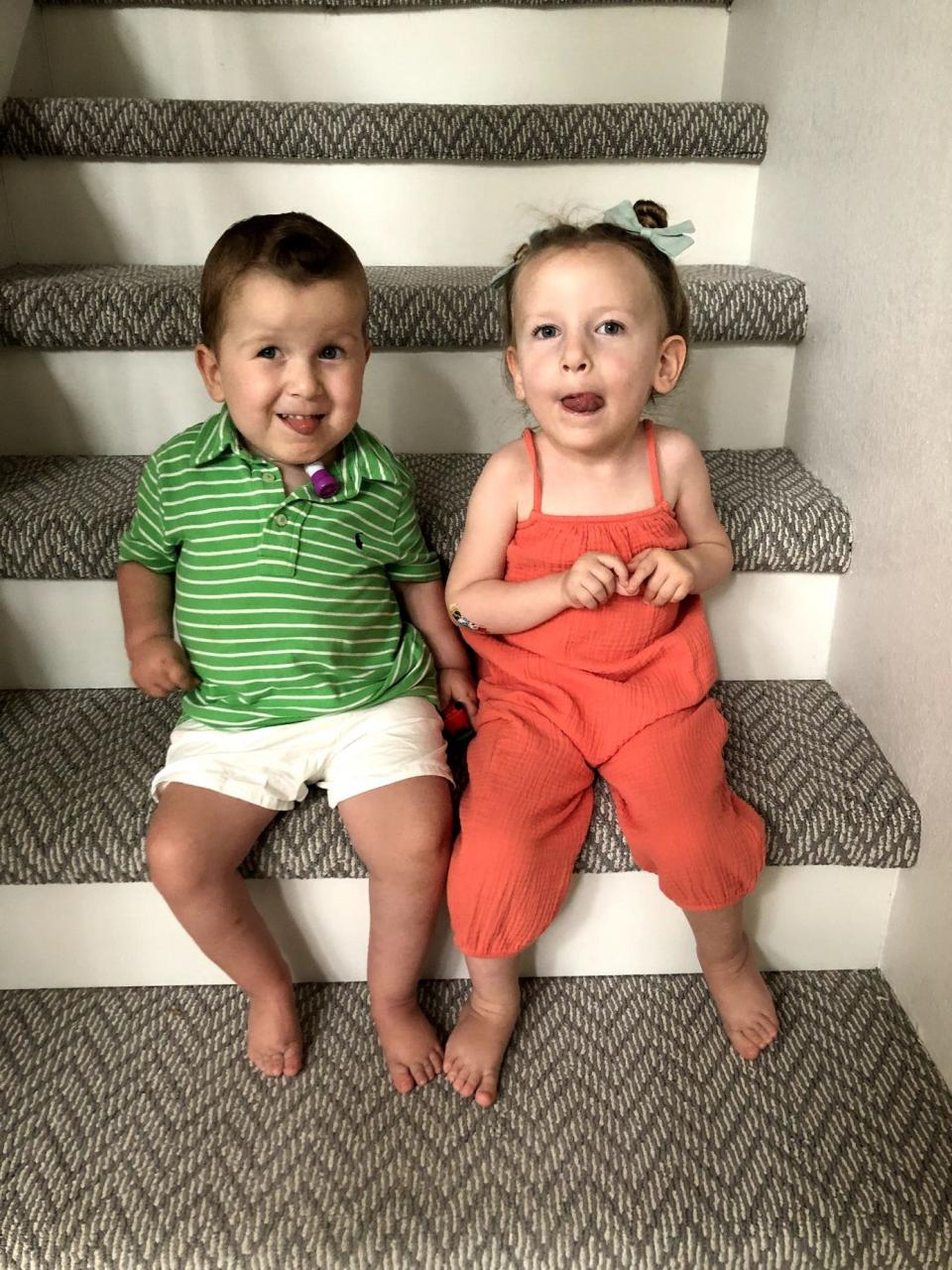
Screening as a life-changer
Since SMA was added last July, 21 newborns have been identified through the screening.
Vedanarayanan is notified when a Central Texas baby is identified.
Because of the Zolgensma gene therapy, "the earlier we treat, the more robust the response," Vedanarayanan said.
In the first case that came to him after newborn screening was implemented, the baby was able to get the dose of Zolgensma in the first month of life. That baby is now 10 months old and crawling.
He appears like a normal baby, Vedanarayanan said.
"We will have a generation of kids who will not have to go through the pain or suffering of this disease," Vedanarayanan said. "It's quite devastating."
Kids with SMA who survive could require a wheelchair or could get "locked in," where they are not able to move or breathe for themselves but they are aware of what's around them.
More treatments needed: Tim Revell will run Austin Marathon for 16th time to raise money to help cure sons' disease
Caught in the before
The Carter twins weren't identified as having SMA until they were already showing clinical signs. Jarod Carter, who heads a physical therapy practice professionally, began doing his research about what was available for his babies once they were diagnosed.
He also partnered with Dr. Steve Roach, who came to Dell Children's and Dell Medical School to lead the pediatric neurology department the year the twins were born.
They began fighting with insurance to start Spinraza as soon as possible. Gray, Jenny Carter said, "was just melting. He was so much weaker every day."
They took to social media and contacted every medical professional they knew to pressure their insurance company to approve Spinraza for both kids immediately.
"You've got to advocate,' Jarod Carter said.
Gray, though, had progressed to the point of needing a gastrostomy tube for feedings.
He then got his first cold and couldn't handle it because his lungs were so weak. He was hospitalized and put on a ventilator.
Jarod Carter spent most of the time in the hospital with Gray, while Jenny Carter was working as an elementary school counselor to keep their insurance and staying with Adelaide.
Then they learned that Zolgensma was in clinical trials, and they could possibly set up a trial for each kid and get the gene therapy.
Roach helped make that happen. "He's our guardian angel," Jenny Carter said.
By January 2019, just before their first birthday, Gray and Adelaide were treated with Zolgensma.
Gray was finally able to go home from the hospital.
They stayed on Spinraza because they had already lost so much before they got Zolgensma. They were able to switch to Evrysdi, the daily oral medication, when that was approved.
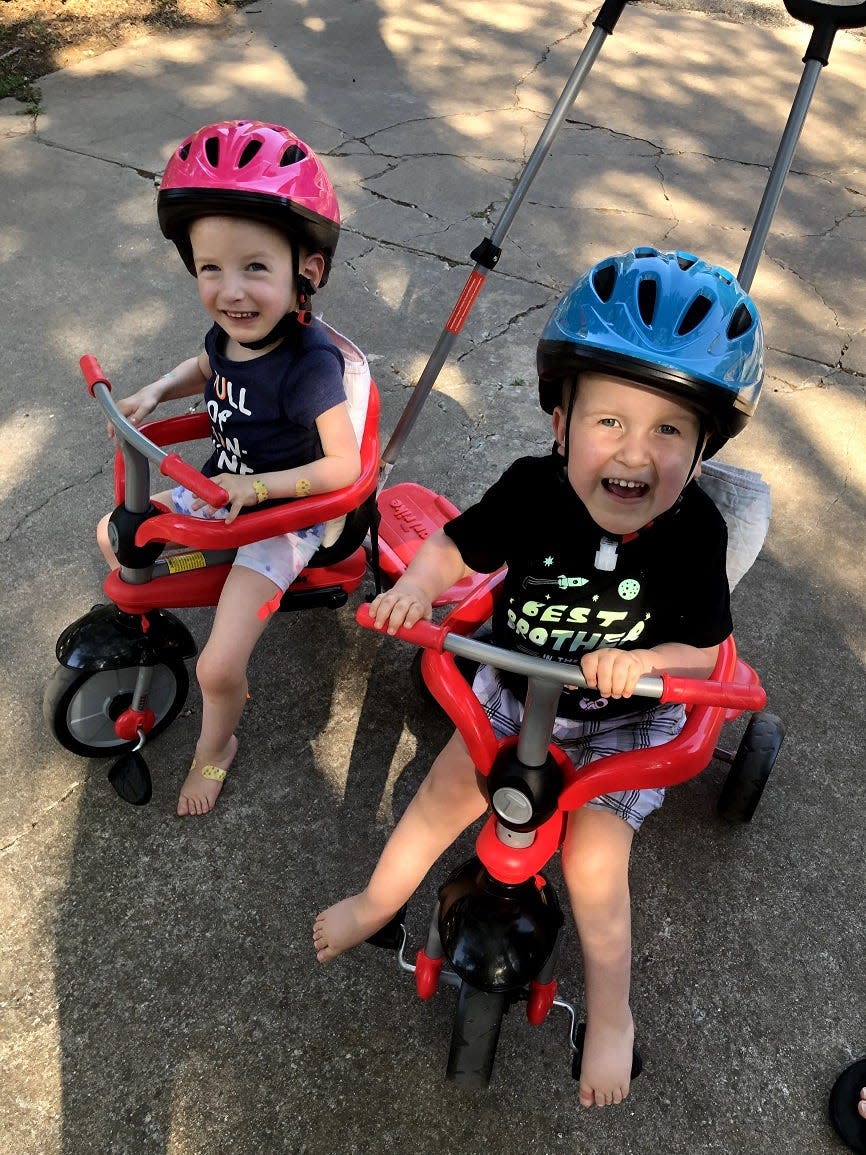
Hope every day
Today, at age 4, the twins are making strides.
"Every day they are stronger, faster or doing something brand new," Jenny Carter said.
The kids do 10 to 15 therapy sessions a week, some of which is covered by insurance. The family uses a GoFundMe page to pay for the other sessions the kids need. Gray also receives full-time nursing care.
This year, Adelaide is able to take some steps on her own. She can crawl up the stairs. Gray is almost able to stand with very little support. He can now feed himself and crawl. He is able to breathe on his own and soon will have his tracheostomy removed.
Adelaide is able to ride a tricycle, and Gray is close behind her.
"They drop the jaws of all their doctors," Jenny Carter said.
The kids don't complain about the amount of therapy or even what they can and cannot do.
"They are just the sweetest, happiest, lovely kids," Jarod Carter said. "They are so, so resilient."
That doesn't mean there isn't some sadness.
"if you compare them to other kids, it's heart-shattering, but if you compare them to themselves, it's what an honor," he said.
"I think about kindergarten, sixth grade or college," Jenny Carter said. "There's so much hope."
The Carters could be bitter that they were 3½ years too late for a newborn screening that would have allowed them to intervene sooner, but then they point out that two years before the twins were born, there were no medications to give them.
"We wouldn't have them," Jenny Carter said.
"Progress is progress," she said. "We're so grateful. They're being healed. They are being stitched back together."
Conditions on the screening horizon
The state is working on adding these in 2024:
Mucopolysaccharidosis type 1
Pompe disease
The U.S. Health and Human Services secretary needs to sign off on these to add them to the Recommended Uniform Screening Panel:
Mucopolysaccharidosis type II
Guanidinoacetate methyltransferase (GAMT) deficiency.
The federal committee is considering adding these to the screening panel:
Krabbe disease
Congenital cytomegalovirus
This article originally appeared on Austin American-Statesman: Genetic testing means new hope for Texas newborns with SMA

